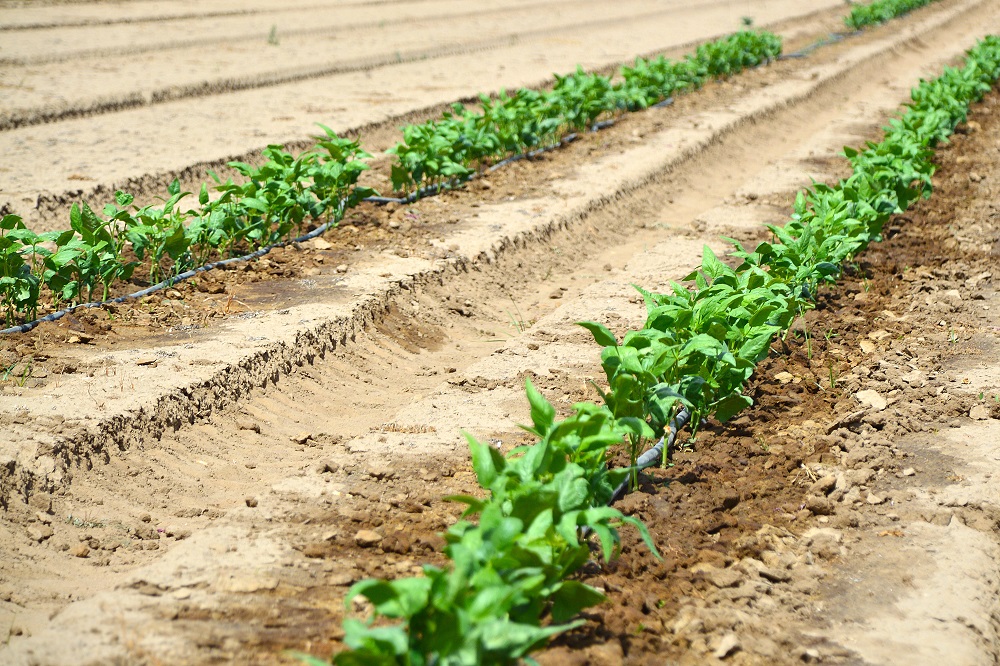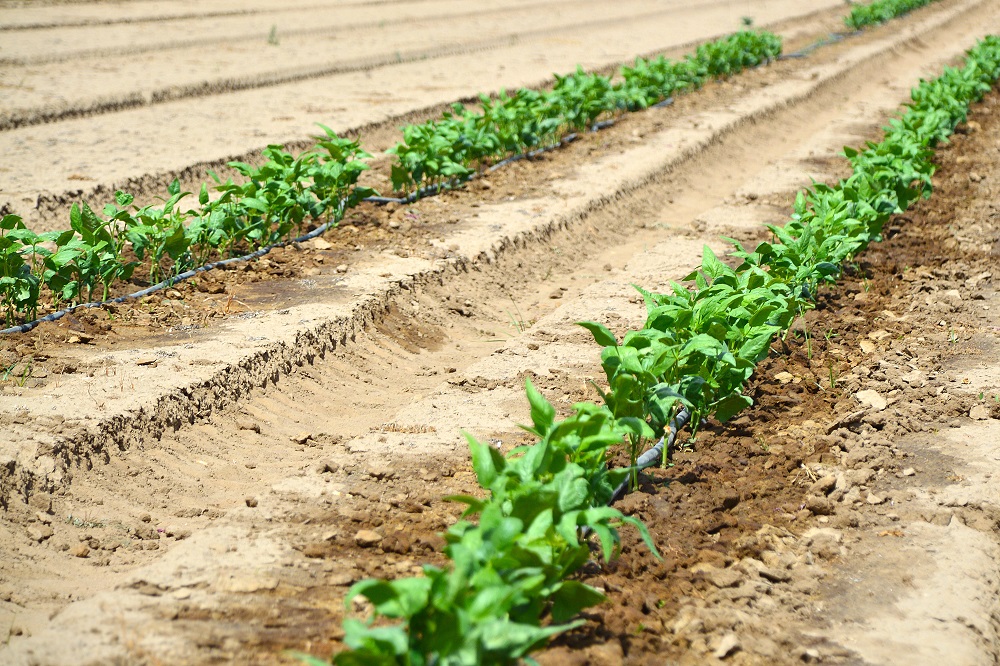
Sandy soils, characterized by their coarse texture and large particle size, pose unique challenges for farmers and agronomists. These soils tend to drain quickly and have low nutrient-holding capacities, making it difficult for plants to thrive. However, with the right amendments and management practices, sandy soils can be transformed into productive and sustainable growing mediums by applying appropriate techniques. In this article we discuss several methods for improving sandy soils to enhance nutrient retention and water-holding capacity, thereby supporting healthier plant growth.
Understanding Sandy Soils
Sandy soils are composed of larger particles (0.05 to 2.0 mm in diameter) compared to silt and clay soils. This particle size creates large pore spaces, allowing water to drain quickly. While good drainage can prevent waterlogging, it also presents several agronomic challenges.
One of the main issues in sandy soils is low water retention capacity, meaning the soil dries out quickly after irrigation or rainfall. Additionally, sandy soils often have a low cation exchange capacity (CEC), which prevents them from retaining and releasing essential nutrients for plants. As a result, even when fertilizers are applied, they may leach away before the roots can absorb them.
Another challenge is poor particle cohesion, making these soils loose and prone to wind and water erosion. The lack of organic matter exacerbates this problem, as the soil structure does not remain effectively bound together.
Due to these conditions, crops grown in sandy soils often face:
- Water stress: Requires more frequent irrigation due to rapid moisture loss.
- Nutrient deficiencies: Leaching and low nutrient holding capacity result in lower nutrient availability.
- Erosion: Without plant cover or adequate organic matter, the soil is more susceptible to wind and water degradation.
- Low biological activity: The lack of organic matter and moisture reduces the presence of beneficial microorganisms.
Objectives for Improving Sandy Soils
To amend sandy soils, the primary goals are to:
- Increase organic matter content to improve water and nutrient retention.
- Enhance the soil’s structure to reduce rapid drainage.
- Incorporate soil conditioners and fertilizers to supply essential nutrients.
Organic Amendments: The Foundation of Soil Improvement
Adding organic matter is one of the main methods for improving sandy soils. It plays a crucial role in binding soil particles together, creating a more stable structure that can hold water and nutrients better. Here are some of the most effective organic amendments:
Compost: Compost is one of the most versatile and effective organic amendments for sandy soils. Rich in decomposed plant and animal matter, compost adds essential nutrients, improves soil structure, and enhances microbial activity. Applying a 2-4 inch layer of compost and incorporating it into the top 6-12 inches of soil can significantly increase the soil’s capacity to retain water and nutrients. Regular applications, ideally annually, will help maintain these benefits over time.
Manure: Aged manure is another excellent amendment for sandy soils. It adds organic matter, nutrients, and beneficial microorganisms that enhance soil fertility. Manure should be well-aged or composted before application to prevent the introduction of pathogens and weed seeds. Like compost, a layer of 2-3 inches of manure worked into the soil will improve nutrient content and water retention.
Cover crops and green manures: Growing cover crops such as legumes, clover, or rye can improve sandy soils. As these crops decompose in the soil, they serve as green manure, adding organic matter and nutrients. Leguminous cover crops, in particular, have the added benefit of fixing atmospheric nitrogen, thus enhancing soil nitrogen content. Cover crops also help in reducing erosion, maintaining soil moisture, and suppressing weeds.
Peat moss: Peat moss is highly effective at increasing water-holding capacity in sandy soils. However, it is slightly acidic, so it is best used in combination with lime in areas where pH correction is needed. Unlike compost and manure, peat moss is relatively low in nutrients, so it should be used alongside other amendments.
Inorganic Amendments
In addition to organic matter, certain inorganic amendments can further enhance sandy soils by altering their physical properties:
Clay and silt: Introducing small amounts of clay or silt into sandy soil can improve its texture and structure. These fine particles fill in the gaps between larger sand particles, reducing the size of pore spaces, slowing down water drainage, and increasing nutrient retention. However, adding too much clay can result in compacted, poorly aerated soils, so it must be done cautiously. Furthermore, this practice is less feasible and common.
Biochar: Biochar is a stable form of carbon made by heating organic material in the absence of oxygen. When added to sandy soils, biochar can improve water retention, enhance nutrient availability, and promote beneficial microbial activity. Biochar’s porous structure provides habitats for soil microorganisms and aids in nutrient cycling. It is a long-lasting amendment that does not decompose quickly, making it a sustainable choice for long-term soil improvement.
Zeolites: Zeolites are naturally occurring minerals with a high cation exchange capacity (CEC), which means they can hold onto nutrients and release them to plants over time. When mixed with sandy soils, zeolites can significantly increase nutrient availability while also improving water retention. Zeolites are particularly useful in agricultural settings where maintaining soil fertility is crucial.
Mulching: Conserving Moisture and Reducing Erosion
Mulching is another essential practice for improving sandy soils. By covering the soil surface with organic or inorganic materials, mulch helps conserve soil moisture, suppress weeds, and reduce soil temperature fluctuations. Organic mulches such as straw, grass clippings, or wood chips gradually decompose, adding organic matter to the soil and improving its structure over time. Applying a 2-4 inch layer of mulch in sandy soils helps retain moisture and prevent erosion.
Fertilizer Management: Balancing Nutrient Supply
Since sandy soils lose nutrients quickly through leaching, growers need to apply fertilizers frequently and in smaller amounts. Organic fertilizers such as compost, manure, and bone meal release nutrients slowly and improve soil structure, making them ideal for sandy soils. However, growers can use synthetic fertilizers along with the organic amendments to provide immediate nutrient availability. Slow-release formulations are particularly effective in sandy soils, as they reduce the risk of leaching and provide a steady supply of nutrients over time.
Irrigation Strategies
Effective irrigation management is essential for maintaining healthy plant growth in sandy soils. Drip irrigation and soaker hoses are more efficient than overhead sprinklers in sandy soils, as they deliver water directly to the root zone, minimizing evaporation and runoff. Frequent, shallow watering may be necessary to keep the root zone consistently moist, but care should be taken not to overwater, as this can lead to nutrient leaching.

Lima beans irrigated with drip systems in sandy soil
The post How to make sandy soils productive first appeared on Cropaia.





